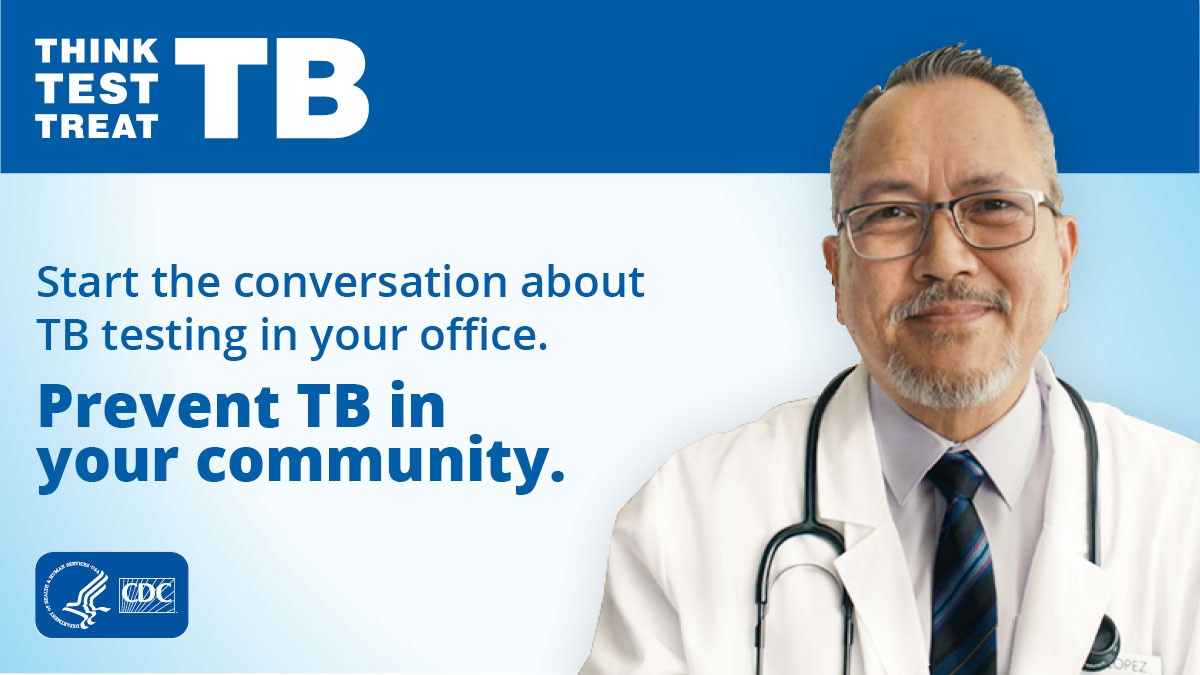Purpose
Use these Think. Test. Treat TB messages for health care providers to increase awareness of latent tuberculosis (TB) infection and encourage TB testing and treatment.

Key messages
Latent TB Infection
- People with latent TB infection (also called inactive TB) do not have signs and symptoms of TB disease and cannot spread TB bacteria to others.
- However, if these bacteria become active and multiply, latent TB infection can develop into TB disease.
- Once active, TB can be spread from person to person through the air.
- However, if these bacteria become active and multiply, latent TB infection can develop into TB disease.
- The Centers for Disease Control and Prevention (CDC) and the U.S. Preventive Services Task Force (USPSTF) recommend testing people that are at increased risk for TB infection.
- As a trusted source of health information in your community, it's important to initiate a conversation about latent TB infection and TB disease with your patients since there may be a lack of awareness about or stigma associated with these conditions.
- Contact your state or local TB program, the TB Centers of Excellence, or visit CDC's latent TB infection resource hub for more information.
TB Risk
- Individuals who were born in or frequently travel to countries where TB is common, including some countries in Asia, Africa, and Latin America, have a higher risk of being exposed to TB.
- Some people with weakened immune systems (due to certain medications or health conditions) are at very high risk of developing active TB disease once infected with TB.
- If your patients fall into one of these categories, consider testing them for TB.
TB Testing
- It is estimated that up to 13 million people in the United States live with latent TB infection. Help reduce the risk of TB in your community. Open the conversation, protect your patients, and test for tuberculosis.
- There are two types of tests for latent TB infection: a blood test and a skin test. A blood test is the preferred option because it can be done in one visit and is the most accurate if patients have been vaccinated for TB in the past.
TB Treatment
- Without treatment, 1 in 10 people with latent TB infection will get sick in the future. You play a critical role in reducing the spread of TB in your community and the United States.
- If your patient tests positive for latent TB infection, it's critical that you consider recommending shorter and more convenient treatments. While all the regimens are safe and effective, short course, rifamycin-based regimens are the preferred treatment options for latent TB infection because they have higher completion rates.
- Resources such as treatment information brochures, and medication trackers and symptom checklists can help your patients complete the full course of treatment.
More than 80% of U.S. TB cases are believed to be associated with longstanding untreated latent TB infection. Testing and treating latent TB infection is a critical step to eliminating TB in the United States and protecting your community.
